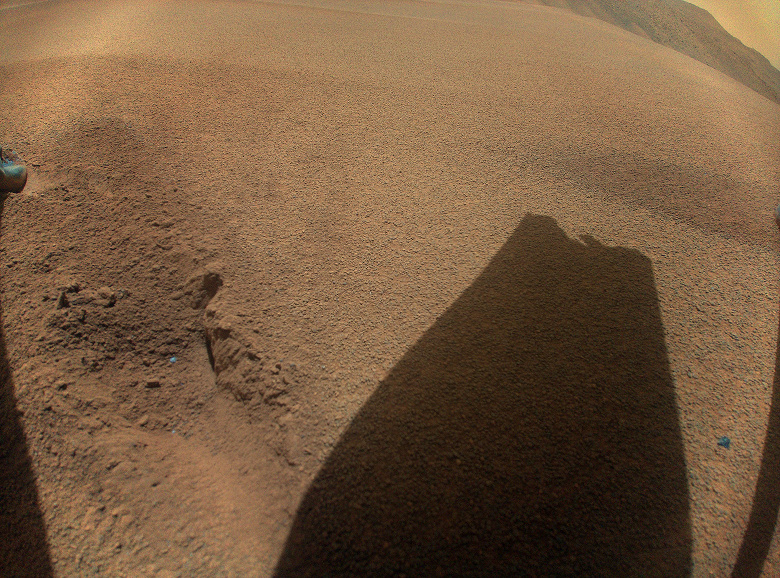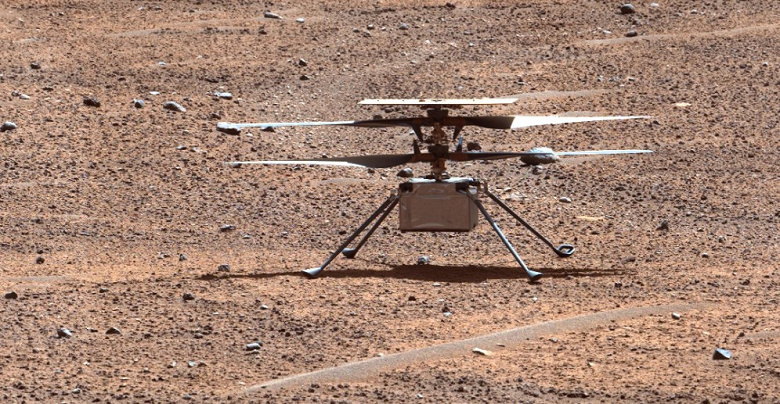NASA thanks Ingenuity for its invaluable contributions and tears
NASA's Ingenuity helicopter completed its mission on the Red Planet, exceeding expectations and completing several dozen more flights than planned. The helicopter is still communicating with mission control, but flight data from January 18 indicates that one or more of its blades were damaged during landing and it is no longer capable of flight.
Originally designed as a technology demonstration to conduct up to five experimental test flights over 30 days, this first aircraft on another planet completed 72 flights in nearly three years and flew more than 14 times further than planned, while the total flight time exceeded two hours.
«The historic journey of Ingenuity, the first spacecraft on another planet, has come to an end. This amazing helicopter flew higher and further than we imagined and helped NASA do what we do best — making the impossible possible. With missions like Ingenuity, NASA is paving the way for future missions to our solar system and better, safer human exploration of Mars», — said NASA Administrator Bill Nelson.
Ingenuity reached Mars on February 18, 2021, attached to the belly of the Perseverance rover, and first took off on April 19, proving that controlled flight is possible on Mars. After four more flights, it began a new mission as an aerosonde for the rover's scientists and engineers. In 2023, the helicopter successfully completed two test flights, which further expanded the team's knowledge of its aerodynamic capabilities.
«At NASA JPL, innovation is at the core of what we do. Ingenuity — an example of how we push the boundaries of what is possible every day. I'm incredibly proud of our team for this historic technological achievement and look forward to what they invent next», — said Laurie Leshin, director of NASA's Jet Propulsion Laboratory (JPL).
The Ingenuity team planned for the helicopter to make a short vertical flight on January 18 to determine its location after the emergency landing. The data shows that, as planned, it reached a maximum height of 12 meters and hovered for 4.5 seconds before beginning its descent at a speed of 1 meter per second.
However, at an altitude of about 1 meter above the surface, Ingenuity lost contact with the rover, which serves as a link to the control station for the helicopter. The next day, communication was restored, and more detailed information about the flight was transmitted to NASA JPL. Information about damage to the rotor blade was received several days later. The reasons for the communication failure and the orientation of the helicopter at the time of landing are still under investigation.
Over the course of its mission, which lasted nearly 1,000 Martian days, more than 33 times longer than originally planned, Ingenuity gained the ability to autonomously select landing sites, deal with a broken sensor, clean itself up after dust storms, and operate on 48 different runways. , made three emergency landings and survived the cold Martian winter. Designed to operate in the spring, Ingenuity was unable to heat itself during the cold nights of the Martian winter, causing the flight computer to periodically freeze and reset. These power reductions required the team to reconsider Ingenuity's winter operations in order to continue flying.

After completion of flight operations, the Ingenuity team will conduct final tests of the helicopter's systems and download the remaining images and data from Ingenuity's memory. The Perseverance rover is now too far away to attempt to take pictures of the helicopter on its final runway.
«It's humbling that Ingenuity not only carries a model of the Wright brothers' original airplane, but that this helicopter followed in their footsteps and proved that flight on another planet is possible. The Mars helicopter would never have flown once, or 72 times, if not for the passion and dedication of the Ingenuity and Perseverance teams. The first Mars helicopter will leave an indelible mark on the future of space exploration and inspire fleets of aircraft on Mars — and on other planets — for the decades ahead», — said Ingenuity project leader Teddy Tzanetos of NASA JPL.

